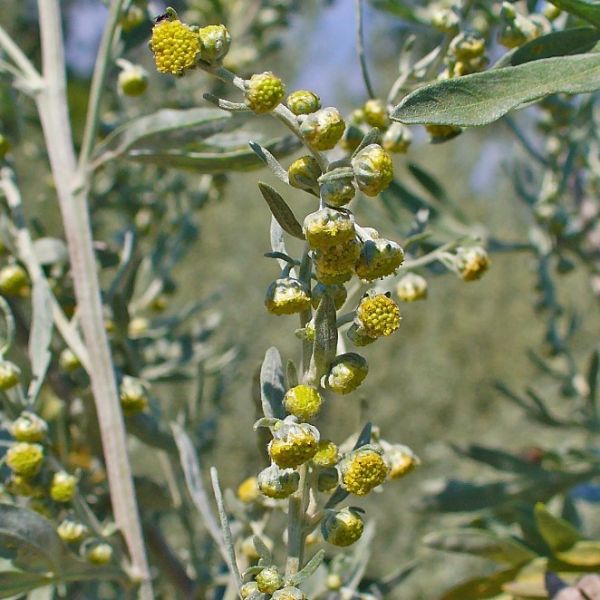Artemisia Absinthium Seeds (Wormwood Seeds)
Artemisia Absinthium Seeds (Wormwood Seeds)
Anthelmintic, digestive, tonic. Used to make the absinthe liqueur.

Delivery
All orders shipped with UPS Express.
Always free shipping for orders over US $250.
All orders are shipped with a UPS tracking number.
Returns
Items returned within 14 days of their original shipment date in same as new condition will be eligible for a full refund or store credit.
Refunds will be charged back to the original form of payment used for purchase.
Customer is responsible for shipping charges when making returns and shipping/handling fees of original purchase is non-refundable.
All sale items are final purchases.
Help
Give us a shout if you have any other questions and/or concerns.
Email: contact@domain.com
Phone: +1 (23) 456 789
Availability: In stock
SKU
Artemisia Absinthium
About 5,000 seeds per gram. Artemisia absinthium (absinthium, absinthe wormwood, wormwood, common wormwood, green ginger or grand wormwood) is a species of wormwood, native to temperate regions of Eurasia and northern Africa. It is a herbaceous, perennial plant with a hard, woody rhizome. The stems are straight, growing to 0.8-1.2 m (rarely 1.5 m) tall, grooved, branched, and silvery-green. The leaves are spirally arranged, greenish-grey above and white below, covered with silky silvery-white trichomes, and bearing minute oil-producing glands; the basal leaves are up to 25 cm long, bipinnate to tripinnate with long petioles, with the cauline leaves (those on the stem) smaller, 5?10 cm long, less divided, and with short petioles; the uppermost leaves can be both simple and sessile (without a petiole). Its flowers are pale yellow, tubular, and clustered in spherical bent-down heads (capitula), which are in turn clustered in leafy and branched panicles. Flowering is from early summer to early autumn; pollination is anemophilous. The fruit is a small achene; seed dispersal is by gravity. It is an ingredient in the spirit absinthe, and also used for flavouring in some other spirits and wines, including bitters, vermouth and pelinkovac. In the Middle Ages, it was used to spice mead. In 18th century England, wormwood was sometimes used instead of hops in beer. Wormwood is the traditional colour and flavour agent for green songpyeon (a type of dduk/tteok, or steamed dumpling/'cookie' made of fine rice flour), eaten during the Korean thanksgiving festival of chuseok in the autumn. Wormwood is picked in the spring when it is still young. The juice from macerated fresh (or reconstituted dry) leaves provides the colouring and flavouring ingredient in the dough prepared to make green songpyeon. The other traditional color for these small desserts is white, made with rice flour dough without wormwood extract. It is also an additional ingredient to mint tea in Moroccan tea culture.
| Common name | Wormwood |
|---|---|
| Family | Asteraceae |
| Genus | Artemisia |
| Species | Artemisia absinthium |
| Therapeutic uses | The leaves and flowering tops are gathered when the plant is in full bloom, and dried naturally or with artificial heat. Its components include silica, two bitter substances (absinthin and anabsinthine), thujone, tannic and resinous substances, malic acid, and succinic acid. It is used medicinally as a tonic, stomachic, antiseptic, antispasmodic, carminative, cholagogue, febrifuge and anthelmintic. It has also been used to remedy indigestion and gastric pain. Wormwood tea is used as a remedy for labor pain. A dried, encapsulated form of the plant is used as an anthelmintic. Extracts of the plant have shown to exhibit strong antimicrobial activity, especially against Gram-positive pathogenic bacteria. <br><br> A wine can also be made by macerating the herb. It is also available in powder form and as a tincture. The oil of the plant can be used as a cardiac stimulant to improve blood circulation. Pure wormwood oil is very poisonous, but with proper dosage poses little or no danger. The oil is a potential source of novel agents for the treatment of leishmaniasis. |
| Germination | Coming soon. |
| Price View | Price Range |

